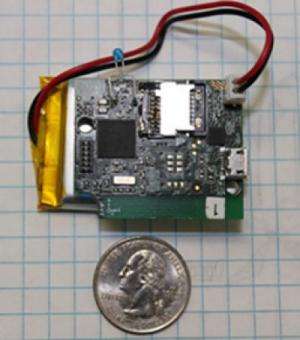Credit: Rochester Institute of Technology
Packaging and distribution of goods is a multi-billion dollar industry. Yet damage to goods while in transit has a financial impact on companies and consumers, also in the millions of dollars, according to national industry advisory organization Health Care Packaging.
Recognizing the conditions under which goods are transported to better prevent damage is key to a new product developed by a research team at Rochester Institute of Technology. The group designed Pak-Track-I and Pak-Track-II, data logger prototypes and a cloud-based data analysis system to evaluate distribution hazards during transit. Analysis is done in real-time and information is relayed via wireless technology to companies. Both system products were recently trademarked and patented.
"This system does more than track where a package or shipment is located along its route," said Changfeng Ge, associate professor of packaging in RIT's College of Applied Science and Technology. "It is a cost effective technology to protect products and provides companies with critical information about shipping conditions in real time, which has not been done as extensively before."
Ge is also director of the American Packaging Corporation Center for Packaging Innovation in the college and led a multi-disciplinary team of faculty and students on the project. Pak-Track-I is suitable for the application of dangerous goods, cold chain and other areas where GPS location and real-time alerts are necessary. The cold chain refers to transportation of temperature-sensitive products. The Pak-Track-II can be attached to individual products to record important information when the product is in distribution and transit.
Ge and his team developed the system to include monitors that can be mounted on the product, package or pallet on a transport vehicle. Multiple sensors in the monitoring devices record data about temperature, humidity, shock received and vibrations—primary methods of damage to materials in transport. This data is transmitted wirelessly from the source—the packages—and collected in a central server with the company. It can be accessed by a smartphone application, and customers can make adjustments to the transport environment based on the data. All information would be archived as well for longer-term analysis if required.
The technology has been two years in development including contributions to the hardware and software components provided by undergraduate and graduate computer science, electrical engineering technology and packaging students. The team plans to commercialize the technology and customize the system for different industries.
"We believe there is a market for this. There are similar systems, but they are more expensive and do not provide customers with real-time information," Ge said. "Currently, we have 32 prototypes being used by companies under research contracts with RIT."
Provided by Rochester Institute of Technology




















